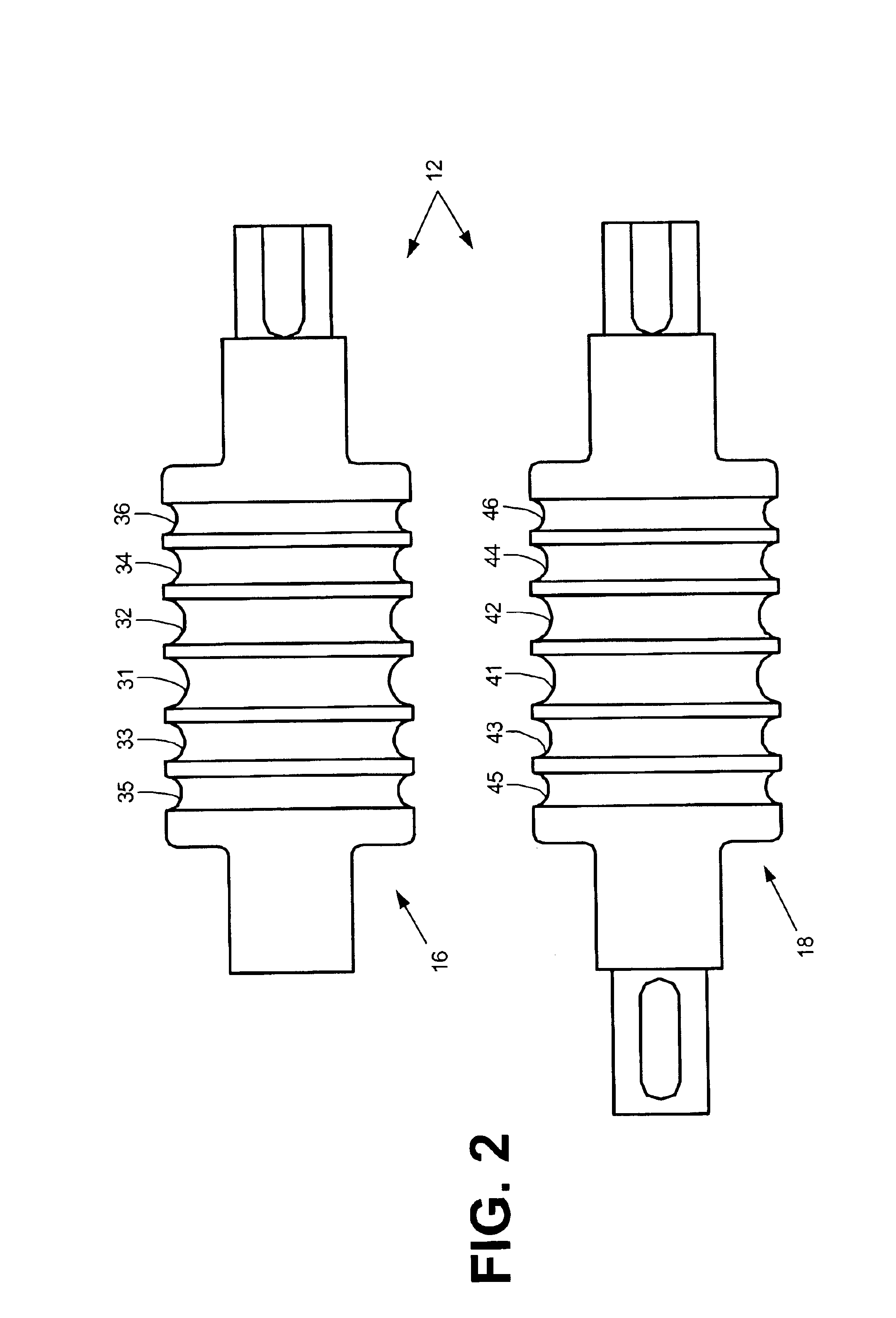Methods of using downhole polymer plug
a polymer plug and polymer technology, applied in the direction of wellbore/well accessories, fluid removal, sealing/packing, etc., can solve the problems of unsatisfactory sealing of unwanted zones, unsatisfactory cement sealing, and unsatisfactory contamination levels of the casing, etc., to achieve good long-term thermal stability, good chemical stability, and high deformation resistance
- Summary
- Abstract
- Description
- Claims
- Application Information
AI Technical Summary
Benefits of technology
Problems solved by technology
Method used
Image
Examples
Embodiment Construction
[0023]Thermoplastic polymers can store a large amount of mechanical energy upon deformation. When this energy is released, the anelastic strain of the polymer is recovered, and the polymer will return to its original shape.
[0024]Anelastic strain recovery is a kinetic process that generally proceeds more quickly with increasing temperatures. For amorphous polymers, like polystyrene, polycarbonate, polymethyl mathacrylate, the recovery is very fast at temperatures above their glass transition temperatures (Tg). For semi-crystalline polymers, such as polyethylene, PVDF, and Halar, the recovery is rapid at a temperature close to their melting point. Recovery of anelastic strain can also be obtained by exposing the polymers to certain solvents.
[0025]The present invention makes use of the anelastic strain recovery properties of particular polymers for plugging or lining a specific zone or location in a wellbore. The method includes providing a polymer member, preferably in the form of a r...
PUM
 Login to View More
Login to View More Abstract
Description
Claims
Application Information
 Login to View More
Login to View More - R&D
- Intellectual Property
- Life Sciences
- Materials
- Tech Scout
- Unparalleled Data Quality
- Higher Quality Content
- 60% Fewer Hallucinations
Browse by: Latest US Patents, China's latest patents, Technical Efficacy Thesaurus, Application Domain, Technology Topic, Popular Technical Reports.
© 2025 PatSnap. All rights reserved.Legal|Privacy policy|Modern Slavery Act Transparency Statement|Sitemap|About US| Contact US: help@patsnap.com



